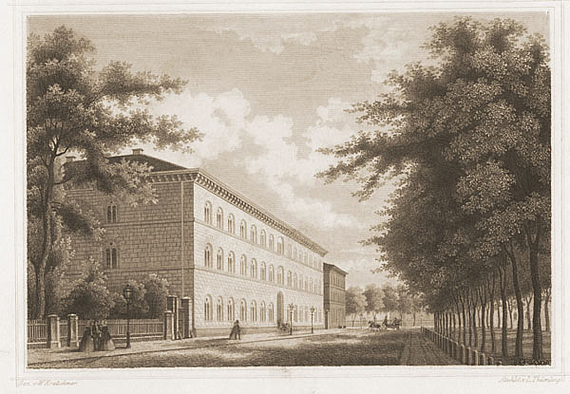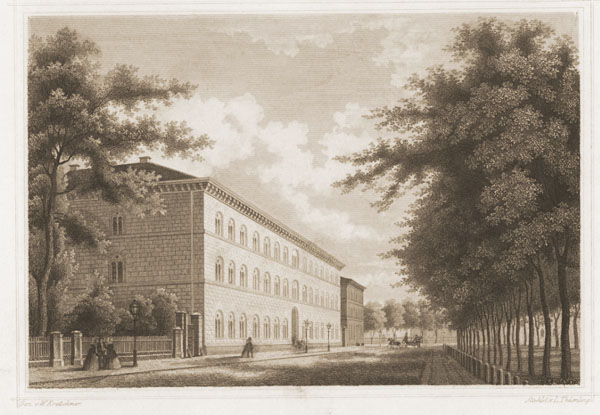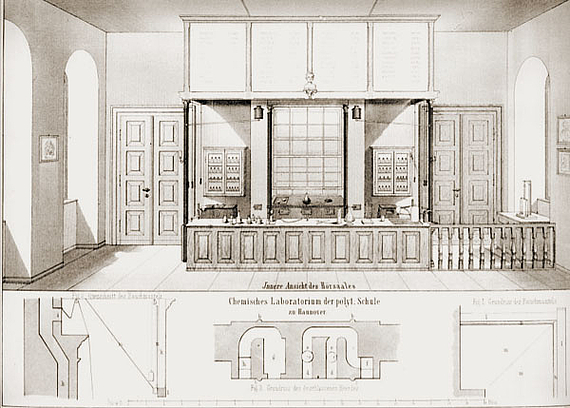


When the 1848 Revolution reached Hannover, the polytechnic students stood as one united corps in the Citizens’ Militia. One of them was the sixteen-year-old Wilhelm Busch, who wanted to become a mechanical engineer. On the whole, however, political events in Hannover passed peacefully.
A one-year preparatory school had been introduced at the polytechnic in 1847.
On average, studies took 2 ½ years, and in 1853 the age of the students entering the college was just under 20. The number of subjects taught tripled between 1845 and 1853. The library built up by Karl Karmarsch could soon measure up to other similar institutions. The chemistry laboratory set up by Friedrich Heeren in 1854/55 was regarded as one of the largest and most modern in the whole of Germany. The 25th anniversary of the college was a proud demonstration of what had been achieved so far, and Karl Karmarsch’s speech was full of the unwavering faith in progress of his age.
Hannover was growing rapidly at that time. The railway station in Steintorfeld was completed, and Ernst-August-Stadt between Georgstraße and the railway was incorporated. Hannover’s industrial development was mainly in the adjoining town of Linden. Until Hannover joined the Zollverein in 1851, however, inner-German trade barriers prevented rapid economic growth.












